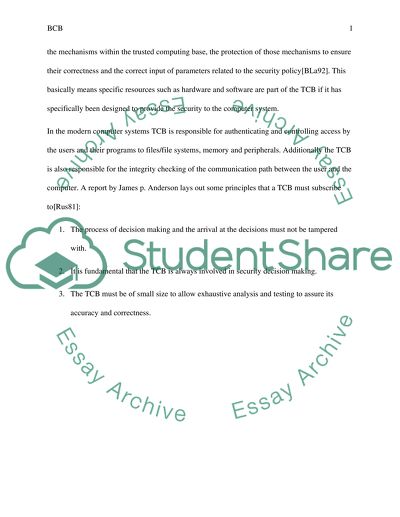Trusted computing base / Business reasons for a BCP and a DRP Research Paper. Retrieved from https://studentshare.org/information-technology/1471205-trusted-computing-base-business-reasons-for-a-bcp
Trusted Computing Base / Business Reasons for a BCP and a DRP Research Paper. https://studentshare.org/information-technology/1471205-trusted-computing-base-business-reasons-for-a-bcp.


